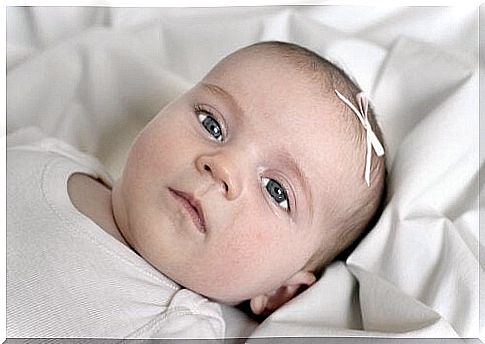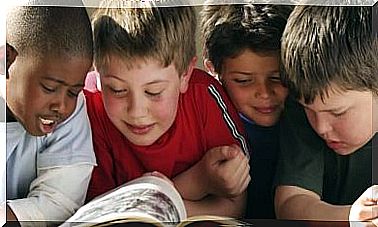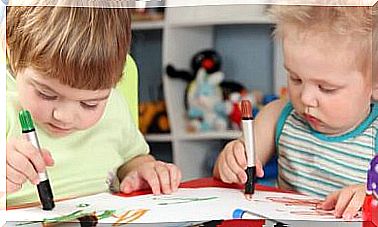Four Fun Facts About Babies’ Breathing

One of the most recurrent concerns for parents who have a child a few days or months old is the way they breathe. In fact, it ‘s very likely that, seeing the baby’s chest move, parents will think the baby is agitated or that something isn’t working well in his lungs. Babies’ breathing is quite different from that of adults.
However, there are certain features that distinguish the respiratory system from newborns.
Babies’ respiratory system is still small and also a little immature until they reach at least the second month of life.
Taking this into account, to know everything about the subject and to be able to distinguish a real problem from a natural condition at these ages, don’t miss the trivia presented below.
Curiosities about babies’ breathing
Babies take between 40 and 60 breaths per minute. This will be directly reflected in the movement of your chest, which has little fat tissue and allows you to make the accelerated movement of your breathing more noticeable.
So you can get an idea, if a newborn takes 60 breaths per minute, an adult takes only 20.
But that’s not all: babies’ breathing is also characterized by a change of rhythm, being irregular, nasal. They may even snore, sigh and make specific noises.
For these reasons, you should be aware of and pay attention to the following data:
1. Irregular breathing in babies
Newborn babies breathe with rhythmic dynamics that are not stable. They can take in air deeply and quickly and, in a few minutes, change to a slow, short breath.
When newborns cry frequently, it also affects the change in breathing, which quickly returns to a slow pace when they stop crying.
It should be noted that premature babies are the most prone to irregular breathing. This is a result of the immaturity of your lungs.

2. Babies only breathe through their nose
Another curiosity about babies’ breathing is that they only take air through their nose. This is because the soft palate is too close to the epiglottis, which does not allow oxygen to pass through the mouth. This condition will only be present when children reach six months.
3. About snoring
Another common action related to breathing in babies is frequent snoring. In relation to this issue, it should be noted that the culprits are the nasal secretions so common in babies, whether from crying or frequent colds to which they are exposed.
Yes, special attention must be paid to snoring. If your child does not have phlegm, has a cold, and still snores a lot, you should see your pediatrician. Maybe this is sleep apnea syndrome.
To identify whether your child may be suffering from this condition, you should examine whether he sweats a lot when he sleeps at night. Also, notice if he feels very uncomfortable or in awkward sleeping postures, or if his breathing stops for a few seconds.
Remember that your baby’s life can be at risk if his breathing stops for more than 20 seconds.
This can trigger the so-called sudden death, which is the child’s death when the child stops breathing. It usually occurs when she sleeps on her back and at night.
4. Periodic or cyclic breathing
Although it doesn’t seem normal, newborn babies’ breathing pauses are frequent. However, as we explained in the previous section, if the pause is longer than 20 seconds, it can be risky.
However, during the first month of life, babies usually stop breathing for between five and ten seconds and automatically resume the breathing cycle without affecting their cardiovascular system.

warning signs
Finally, we want you to know which signs are not included in the so-called normal situation regarding babies’ breathing:
- If you find your pace is too fast, exceeding 60 breaths per minute.
- In case he breathes too hard and you find his chest and ribs sink too deep.
- If your face, mouth, tongue or some of your extremities turn blue.
Ultimately, if you can afford it, it’s good to learn about first aid and cardiopulmonary resuscitation. If your baby stops breathing for more than 30 seconds and you find him unresponsive, it can be a very valuable tool in getting him out of the emergency room.









